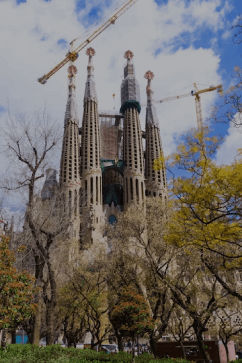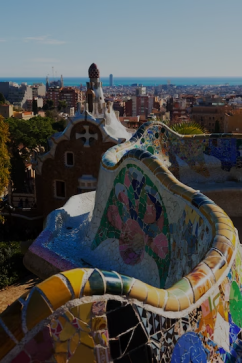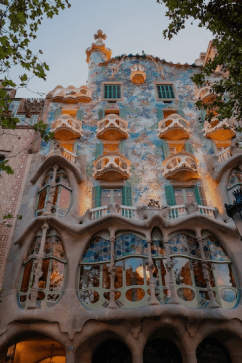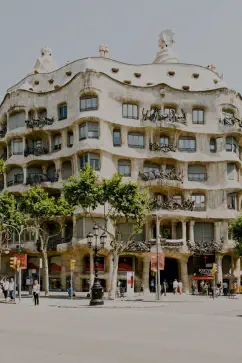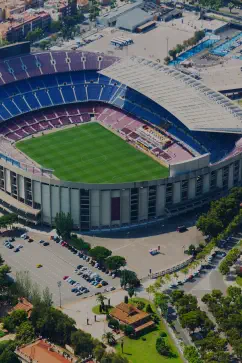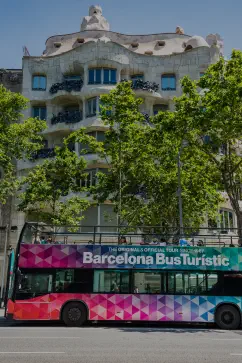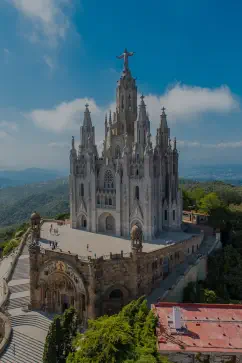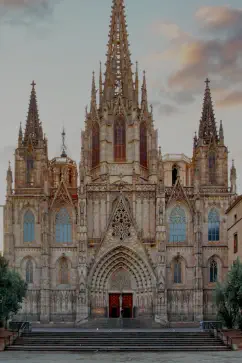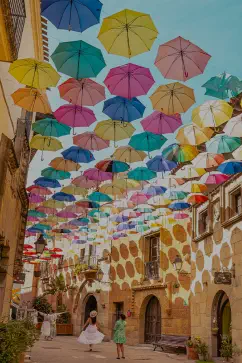Picasso Museum

About the Picasso Museum
The Picasso Museum, Barcelona is a captivating homage to the artistic legacy of Pablo Picasso. Situated in the heart of the city, this museum houses an exceptional collection of Picasso’s famous paintings and sculptures, showcasing his remarkable evolution as an artist. The museum’s location adds to its allure, allowing visitors to immerse themselves in the ambiance that influenced many of Picasso’s iconic works. Housed in a medieval palace, the Picasso Museum boasts an extensive collection of Picasso’s works, tracing his creative journey from his early years to his later masterpieces.
From his early pieces to his revolutionary Cubist creations, the Pablo Picasso Museum offers a comprehensive journey through his diverse styles and techniques. The galleries are adorned with an array of Picasso paintings that offer insights into his artistic genius. Visitors can witness Picasso’s diverse artistic styles, including his Blue Period, Rose Period, and the revolutionary Cubist movement. As you explore the museum, you’ll gain a profound appreciation for Pablo Picasso’s lasting impact on the art world and his enduring legacy.
History of the Picasso Museum
The Picasso Museum Barcelona has a rich history intertwined with the life and work of the legendary artist Pablo Picasso. Founded in 1963 by Jaume Sabartes, Pablo Picasso’s close friend and personal secretary, is a testament to the artist’s enduring legacy. Despite being born in Málaga, Picasso held a profound connection to Barcelona, making it the ideal home for his museum.
The Picasso museum’s collection began with donations from Picasso’s personal secretary, Jaime Sabartés, who gifted a significant number of artworks to the city. Donations from friends, collectors, and Pablo Picasso’s own contributions followed. Prior to his death in 1968, Sabartes left 58 pieces from the Las Meninas series; shortly after, Picasso gave 920 pieces of art.
Throughout the 1980s, the museum’s collection flourished with additional donations and acquisitions, including notable pieces like “Portrait of Jacqueline with Tape.” The museum’s growth led to a 1999 expansion, adding 3,400 square meters for temporary exhibitions. In 2003, renovations revitalized the space, and in 2005, it earned recognition as a museum of national interest by the Catalan government. The Picasso museum location in the heart of the city adds to its allure, providing visitors with an immersive experience into the life and art of Pablo Picasso, capturing his evolution and profound impact on the art world.

Tips for your visit
- Plan Ahead: Before your visit, familiarize yourself with the Picasso Museum location. Check the Picasso Museum opening hours to ensure your visit aligns with the museum’s schedule.
- Buy Tickets in Advance: To avoid long queues, purchase Picasso Museum tickets beforehand.
- Timing is Key: Plan your visit to the Pablo Picasso Museum during less crowded hours to immerse yourself in the artworks without feeling rushed fully.
- Join a Guided Tour: Consider joining a guided tour for a deeper understanding of Pablo Picasso’s masterpieces as knowledgeable guides can provide insights into the artist’s life and creative process.
- Capture the Memories: Photography is allowed in most areas of the Picasso Museum, but be mindful of any restrictions. Capture your favorite Picasso paintings to cherish the memories of your visit.
- Respect the Artworks: While admiring the exhibits, refrain from touching the artworks, even Picasso’s famous paintings, to preserve their integrity for future generations.
- Explore Temporary Exhibitions: In addition to the permanent collection, check for any temporary exhibitions. These displays often showcase unique and lesser-known works by Pablo Picasso.
- Enhance Your Experience: Consider reading about Pablo Picasso’s life and artistic journey before your visit as this knowledge will enrich your understanding of the artworks on display.
- Relax in the Courtyard: Take a moment to relax in the Pablo Picasso Museum’s courtyard, surrounded by the ambiance of art and history.
- Visit the Picasso Museum Shop: The museum shop offers a variety of souvenirs, art books, and replicas of Picasso’s works, making perfect mementos for your visit.
Tickets
Discovering the wonders of the Picasso Museum in Barcelona is made effortless with a variety of ticket options. Opt for the Skip the Line Tickets, a bestseller starting at just €12.00, that ensures you avoid queues and grants swift access to one of the world’s most renowned art museums, housing over 4200 Pablo Picasso paintings and captivating temporary exhibitions. Alternatively, immerse yourself in the Guided Tour with Fast Track Ticket, starting from €35.00, where an experienced guide showcases the museum’s essentials, followed by ample time to explore at your own pace.
For a broader experience, indulge in the Guided Walking Tour + Picasso, starting at €30.00, where an English guide takes you to iconic spots like Els Quatre Gats Café before a skip-the-line visit to the Pablo Picasso Museum. Art lovers can embrace the Articket pass, starting from €35.00, allowing priority entry to Barcelona’s six most important museums, including the Picasso Museum. With these options, you can delve into the artistic brilliance of Pablo Picasso, free from hassles and brimming with wonder.
How to arrive
To reach the renowned Picasso Museum in Barcelona and bask in the artistic brilliance of Picasso’s famous paintings, you can use various public transportation options.
By Metro: Take the metro to the “Jaume I” station (Yellow Line L4) or ” Arc de Triomf” station (Line L1). From there, it’s a short walk to the museum’s location.
By Bus: Catch a bus 120, 45, V15 or V17 from Via Laietana stop or get on H14,45, or 51 from Pla de Palau stop. You can also board bus 120 from Princesa stop or bus 39,51, or H14 fromPasseig Picasso stop.
By Car: The Picasso Museum does not provide its own parking facilities. However, there are several nearby parking options available for visitors that includes Carrer Princesa, Passeig del Born / Plaça Comercial, Plaça de la Catedral, Avinguda Cambó, and Via Laietana.

